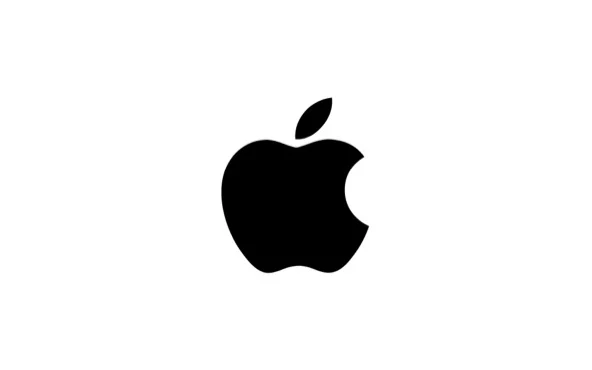In the dynamic world of marketing and design, logos serve as the silent ambassadors of brand identity. Over the years, iconic logos have evolved, adapting to new aesthetic standards, technological advancements, and consumer expectations. This article explores the historical evolution of some of the world’s most iconic logos, highlighting how changes in design reflect broader shifts in corporate strategy and consumer culture.
Creating a logo can be streamlined and efficient using an online logo maker. These digital platforms offer a user-friendly interface where even those without graphic design experience can design a professional-looking logo in minutes. By selecting from a variety of templates, fonts, icons, and color schemes provided by the online logo maker, users can customize their design to suit their brand’s identity and needs. Additionally, these tools often provide options for scalability, ensuring that the logo looks great in various formats and sizes. Whether for a new startup or a small business looking to refresh its image, an online logo maker is a cost-effective, accessible solution that empowers users to bring their brand vision to life.
Apple’s Bite of Simplicity
The Apple logo, a symbol of innovation and quality, has undergone significant changes since its inception. Initially featuring Isaac Newton under an apple tree, the logo was complex and historical. This changed in 1977 when Rob Janoff designed the iconic bitten apple. This new, minimalist logo was not only more scalable but also more memorable, fitting perfectly with Apple’s emerging market presence in personal computers.
Originally, the Apple logo was rendered in rainbow colors, reflecting the Apple II’s capability to display color, a unique feature at the time. In 1998, coinciding with the return of Steve Jobs and the introduction of the new iMac, the logo was simplified to a monochromatic scheme. This shift matched Apple’s sleek, minimalist product design and was easier to reproduce across media.
The evolution from a detailed illustration to a minimalist design mirrors Apple’s philosophy of making technology accessible and user-friendly. The logo’s simplicity has made it an enduring symbol of the brand, emphasizing Apple’s focus on clean, efficient design that transcends technological trends. The bitten apple remains a powerful icon of global recognition, reflecting Apple’s commitment to innovation and quality in the tech world.
Coca-Cola’s Fluid Script
The Coca-Cola logo, known for its distinctive Spencerian script, has been a symbol of refreshment and joy since 1886. Although the fundamental design has remained consistent, the logo has undergone subtle refinements to enhance its readability and aesthetic appeal. The original choice of a flowing, elegant script aligned with late 19th-century values of sophistication and grace.
Over the decades, these adjustments have included smoothing out the font and tweaking the color palette to ensure the logo remains vibrant and visually appealing in a variety of media. The evolution of the Coca-Cola logo focuses on incremental changes that refine its presentation while preserving its heritage and emotional resonance.
This strategic focus on gradual refinement rather than dramatic redesigns has allowed the Coca-Cola logo to embody a sense of youthful joy and global reach. It stands not just as a brand mark but as a cultural icon, maintaining its relevance and appeal across generations by balancing classic design with contemporary aesthetics.
McDonald’s Golden Arches
The McDonald’s logo, with its famous Golden Arches, exemplifies the strategic use of shape and color in branding. Introduced in 1961, the arches were originally architectural elements in McDonald’s restaurant designs. By 1968, these arches had been transformed into the stylized “M” that is now recognized globally as a symbol of fast food and convenience.
This evolution from a structural component to a standalone logo represents more than a design change; it signifies a shift in the brand’s identity. The Golden Arches no longer just marked a place; they became a symbol of McDonald’s promise of consistency, familiarity, and reliability, resonating with customers around the world.
The simplicity and distinctiveness of the arches have allowed them to become a shorthand for the brand, encapsulating McDonald’s commitment to providing a universally welcoming dining experience. This transformation illustrates the power of visual branding to communicate a company’s values and service ethos effectively.
Nike’s Swoosh
Nike’s iconic swoosh, designed by Carolyn Davidson in 1971, perfectly captures the essence of movement and speed. Initially paired with the Nike name, the swoosh has become potent enough to stand on its own as the brand has risen to global prominence. This transition from a word-logo combination to the standalone swoosh marks Nike’s evolution from a specialty footwear producer to a worldwide leader in sports apparel and equipment.
The simplicity of the swoosh design has allowed it to become a universally recognized symbol of athletic excellence and innovation. Its streamlined form conveys a sense of dynamism and agility, aligning with Nike’s brand identity as a facilitator of high performance and determination. The evolution of this logo underscores how effectively a well-designed symbol can communicate a brand’s core values and resonate across diverse markets.
Evolving With Time
These examples illustrate a broader trend in logo design towards simplicity and clarity. As digital platforms became the primary mode of interaction with consumers, logos had to adapt to smaller screens and quicker recognition needs. The evolution of logos also reflects a shift in marketing strategies from formal and descriptive to instant and emotive visual communication.
Conclusion
Iconic logos not only symbolize a brand but also tell the story of its evolution and adaptation through time. As companies grow and technologies change, logos are often the first to reflect shifts in business strategy and consumer behavior. This historical analysis not only highlights changes in design but also underscores how brands communicate their identity and values in an ever-evolving market, maintaining relevance and connection with their audience. Through their logos, brands continue to engage with history, technology, and culture in a dialogue that is both visual and profoundly strategic.